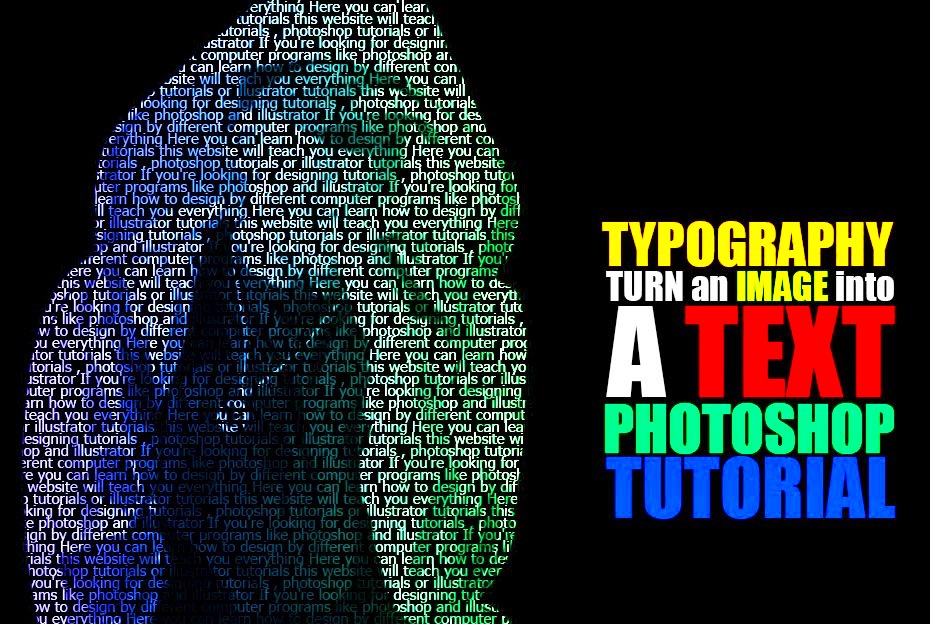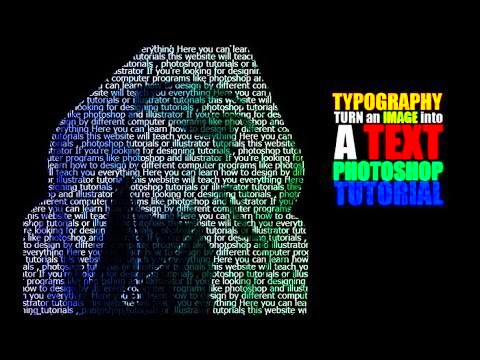Image to text conversion is a valuable skill, especially in our digital age where visuals dominate. Whether you’re a student, a professional, or a casual user, knowing how to extract text from images can save you time and effort. Imagine having to type out a lengthy quote from a book or a document that’s only available as an image. With this technique, you can easily convert it into editable text, making your tasks more efficient.
Beyond just saving time, converting images to text enhances accessibility. It allows those with visual impairments to use screen readers to access content. Additionally, it facilitates better organization of information, especially for research or academic purposes. By converting images to text, you can easily integrate that content into your notes, documents, or presentations. It’s all about making information more manageable and usable.
Exploring the Features of Photoshop for Text Extraction

Photoshop is more than just a photo editing tool; it offers features that simplify the process of converting images to text. One of the standout tools is the Optical Character Recognition (OCR). This feature allows Photoshop to analyze the text in an image and convert it into editable text. Here are some key features of Photoshop that aid in text extraction:
- Smart Selection Tools: Easily select areas of the image containing text.
- Text Layer Editing: Modify extracted text and adjust font styles as needed.
- High-Quality Image Processing: Maintain image quality while extracting text.
- Integration with Other Adobe Apps: Use with apps like Adobe Acrobat for advanced text editing.
Using Photoshop for this task not only provides a high level of accuracy but also gives you the creative flexibility to tweak the results. It’s a powerful tool that can make the image to text conversion process seamless and efficient.
Also Read This: Play YouTube Videos Backwards for a Fun New Experience
Step by Step Guide on How to Convert an Image into Text
Converting an image to text in Photoshop is a straightforward process. Follow these steps to get started:
- Open Photoshop: Launch the program and import the image you want to convert.
- Select the Image: Use the Rectangular Marquee Tool or the Magic Wand Tool to select the text area in the image.
- Use the OCR Feature: Go to the Type menu, and select Convert to Text. This will trigger the OCR process.
- Review and Edit: Once the text is extracted, review it for accuracy. Make any necessary edits directly within the text layer.
- Save Your Work: After finalizing your edits, save the document in your desired format, such as .txt or .docx.
By following these steps, you can efficiently convert images into editable text. Remember, the quality of the original image greatly affects the accuracy of the OCR process, so ensure your images are clear and well-lit for the best results.
Also Read This: Where to Find the Best Image Processing Labs in the USA
Tips to Enhance Image Quality Before Conversion
Before diving into the conversion process, it's essential to ensure that the image quality is up to par. A high-quality image will significantly improve the accuracy of text extraction. Here are some practical tips to enhance your image quality before conversion:
- Use High-Resolution Images: Always start with a high-resolution image. The clearer the text, the easier it will be for Photoshop to recognize it.
- Ensure Good Lighting: Natural light works best. Avoid shadows and glare that can obscure text.
- Adjust Contrast: Increasing the contrast can make the text stand out more from the background. You can do this in Photoshop by using the Image menu and selecting Adjustments followed by Brightness/Contrast.
- Crop Unwanted Areas: Remove any unnecessary parts of the image that don’t contain text. This helps Photoshop focus on the relevant content.
- Straighten the Image: If the image is tilted, straighten it using the Crop Tool. This makes the text easier to read.
By taking these steps, you set yourself up for a smoother conversion experience. A little effort in preparing your image can lead to better results in text extraction.
Also Read This: Creating Welcome Charts for Classrooms with Dailymotion Assistance
Common Challenges and How to Overcome Them
While converting images to text is a powerful tool, it’s not without its challenges. Being aware of these common issues can help you tackle them effectively:
- Blurred Text: If the text is blurry, OCR may struggle to read it. To solve this, ensure you use high-resolution images. If the text is still unclear, consider enhancing the image using filters in Photoshop.
- Incorrect Text Recognition: Sometimes, OCR may misinterpret characters, especially if the font is unusual. Always proofread the extracted text carefully.
- Background Noise: Busy or patterned backgrounds can confuse the OCR process. Try to isolate the text area as much as possible or use Photoshop’s tools to simplify the background.
- Limited Language Support: Be mindful that OCR may not support all languages or special characters. If you encounter this, consider using an alternative tool that caters to your needs.
By anticipating these challenges, you can prepare better and enhance your image-to-text conversion experience. Each issue has a solution, and knowing them can save you time and frustration.
Also Read This: How to Rotate an Image in Lightroom
Using Additional Tools to Complement Photoshop
While Photoshop is a powerful tool for converting images to text, it’s often beneficial to use additional software to enhance the process. Here are some great tools that can complement Photoshop:
- Adobe Acrobat: This is excellent for creating PDFs and has built-in OCR capabilities. You can use it to refine your text extraction after initial conversion in Photoshop.
- ABBYY FineReader: Known for its high accuracy, this dedicated OCR software can handle various languages and complex layouts, making it a great choice for challenging images.
- Google Drive: You can upload images to Google Drive and use its built-in OCR feature. Simply right-click on the image, select "Open with," and choose "Google Docs." The text will appear in a new document.
- Online OCR Tools: Websites like OnlineOCR.net and i2OCR offer free services for quick conversions without the need for software installation.
Using these additional tools can enhance your workflow and provide better results. They offer various features that may suit specific needs, making your text extraction tasks easier and more efficient.
Also Read This: How to Monetize Your Likee Account and Make Money
Real Life Applications of Image to Text Conversion
Image to text conversion isn't just a techy buzzword; it has real-world applications that can make life easier and more efficient. Whether you're a student, a professional, or simply someone who loves to capture information, you’ll find numerous ways to benefit from this process. Here are some practical applications:
- Academic Use: Students can convert textbook images or lecture slides into editable text, making it easier to create notes and study materials.
- Research: Researchers can extract text from articles or books, allowing for easier data compilation and analysis.
- Business Documentation: Companies often deal with scanned documents. Converting these into editable formats can streamline workflow and improve productivity.
- Accessibility: Converting images to text makes content more accessible to individuals with visual impairments, enabling them to use screen readers effectively.
- Content Creation: Bloggers and writers can convert quotes or excerpts from images into text, saving time and ensuring accuracy in their work.
These applications highlight just how versatile image to text conversion can be. By utilizing this skill, you can make information more accessible and enhance your productivity in various aspects of life.
Also Read This: How to Record Music from YouTube as a Beginner
FAQs about Converting Images to Text in Photoshop
When it comes to converting images to text in Photoshop, you might have some questions. Here are answers to a few frequently asked questions that can help clarify the process:
- Can Photoshop recognize handwritten text?
While Photoshop's OCR capabilities are primarily designed for printed text, it can sometimes recognize clear handwriting. However, accuracy may vary. - What file formats can I use?
Photoshop supports various image formats, including JPEG, PNG, and TIFF, making it versatile for different types of images. - Do I need a special version of Photoshop?
Most modern versions of Photoshop include the necessary tools for text extraction. Ensure your software is updated to access the latest features. - Is it possible to convert images in bulk?
While Photoshop is great for single images, for bulk conversions, consider dedicated OCR software or online tools that allow batch processing. - What should I do if the text is not accurate after conversion?
Always proofread the extracted text. If accuracy issues persist, try enhancing the image quality before conversion or using a different OCR tool.
Understanding these common queries can make your image to text conversion experience smoother and more effective.
Conclusion on the Benefits of Image to Text Conversion
In conclusion, image to text conversion is an invaluable skill in today’s digital landscape. It streamlines tasks, enhances accessibility, and ultimately saves time and effort. By mastering this technique in Photoshop, you can transform how you handle information, whether for personal projects or professional needs.
The benefits are clear:
- Efficiency: Quickly turn images into editable text, reducing the need for manual typing.
- Accessibility: Make information available to everyone, regardless of their reading abilities.
- Organization: Easily integrate extracted text into documents, notes, or presentations, keeping your work organized.
- Learning Aid: Students can enhance their study materials, leading to better understanding and retention of information.
Whether you’re a student, a professional, or just someone looking to simplify tasks, learning to convert images to text is a valuable asset. Embrace the possibilities this skill offers, and enhance your productivity in everyday life!

 admin
admin








